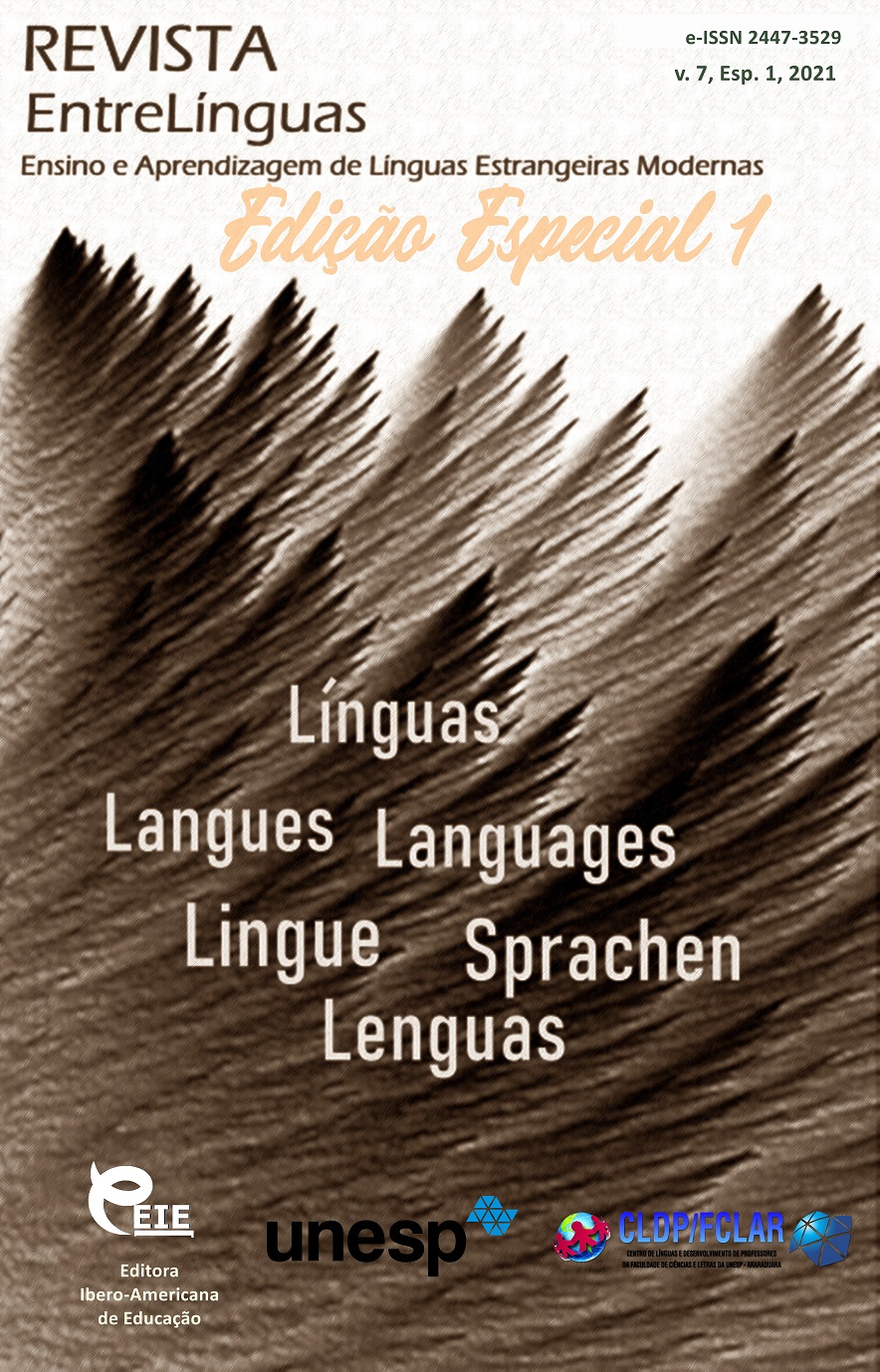Translating texts on business and economics: some pitfalls for perspective translators
DOI:
https://doi.org/10.29051/el.v7iEsp1.14889Palavras-chave:
Tradução, Textos sobre negócios e economia, Unidades fraseológicas, Tradutor de perspectiva, Recursos léxico-fraseológicosResumo
O presente estudo teve como objetivo investigar os problemas de tradução mais comuns que os alunos do programa de formação profissional adicional “Tradutor para fins específicos” da Universidade Federal de Kazan tiveram ao traduzir textos sobre negócios e economia do russo para o inglês. Para cumprir o objetivo da pesquisa, 61 participantes receberam materiais autênticos de periódicos para tradução. Os textos continham traços lexicais - fraseológicos com características correspondentes às dificuldades mais comuns da tradução: termos econômicos, vocabulário não equivalente, neologismos, expressões idiomáticas, eufemismos, abreviaturas. Os resultados do estudo mostraram que os alunos têm um bom conhecimento da tradução dos principais termos econômicos e conhecem as técnicas de tradução. O maior desafio que enfrentaram estava relacionado com a tradução de expressões idiomáticas e falsos cognatos. Neologismos pareciam não ser palavras difíceis, mas bastante desafiadoras. A entrevista que se seguiu às tarefas de tradução ajudou a identificar as dificuldades subjetivas dos tradutores de perspectiva e as técnicas com que as enfrentaram. Os dados obtidos a partir das respostas dos participantes podem fornecer informações profundas para a concepção do programa.
Downloads
Referências
AKULENKO, V. V. O lozhnykh druz'yakh perevodchika, Anglo-russkiy i russko-angliyskiy slovar' «lozhnykh druzey perevodchika. Moscow, 1969.
BARKHUDAROV, L. S. Yazyk i perevod (Voprosy obshchei i chastnoi teorii perevoda). 1975.
CATFORD, J. C. A linguistic theory of translation: an essay in applied linguistics. Oxford UP. 1965.
CRYSTAL, D. Language and languages. London: Blackwell Publishers, Economic translation. 1992. Available: http://inter-perevod.ru/economic. Access: 10 dec. 2020.
DICTIONARIES and encyclopedias. 2020. Available: https://dic.academic.ru/. Access: 10 dec. 2020.
GHAZAL, H. Translation as problems and solutions. 2008. Available: https://drive.uqu.edu.sa/_/ofahmawii/files/Translation%202-ilovepdf- compressed.pdf. Access: 10 dec. 2020.
ISMAGILOVA, L. R.; SOLODKOVA, I. M.; GRIGORIEVA, E. V. Cultural aspect in the course materials for the vocational training programs. In: SHS Web of Conferences. EDP Sciences, 2017. v. 37, p. 1078.
KAZAKOVA, T. A. Teoriya perevoda. (Lingvisticheskiye aspekty). St Petersburg Skifiya, 2000. p. 69.
KOESSLER M.; DEROCQUIGNY J. Les faux amis ou les trahisons du vocabulaire anglaise. Paris: Conseils aux traducteurs, 1928.
NIKOLAYEVA, A. A. Features of economic translation (Osobennosti ekonomicheskogo perevoda). 2010. Available: http://conf.sfu-kras.ru/sites/mn/pdf/14/ 9201.pdf. Access: 10 dec. 2020.
OZHEGOV, S. I.; SHVEDOVA, N. Y. Tolkovyy slovar' russkogo yazyka: 80000 slov i frazeologicheskikh vyrazheniy. Moscow: Azbukovnik, 2009.
TAAMNEH, I. M. The Most Common Translation Problems Encounter the Saudi Students in Translating Selected Arabic Literary Items and their Point of Views behind these Problems. International Journal of Applied Linguistics and English Literature, v. 7, n. 5, p. 77-86, 2018.
Downloads
Publicado
Como Citar
Edição
Seção
Licença

Este trabalho está licenciado sob uma licença Creative Commons Attribution-NonCommercial-ShareAlike 4.0 International License.
Os manuscritos aceitos e publicados são de propriedade da Revista EntreLínguas. Os artigos publicados e as referências citadas na Revista EntreLínguas são de inteira responsabilidade de seus autores.
Transferência de direitos autorais – autorização para publicação
Caso o artigo submetido seja aprovado para publicação, já fica acordado que o(s) autor(es) autoriza(m) a UNESP a reproduzi-lo e publicá-lo na EntreLínguas, entendendo-se os termos “reprodução” e “publicação” conforme definição respectivamente dos incisos VI e I do artigo 5° da Lei 9610/98. O artigo poderá ser acessado pela rede mundial de computadores (Internet), sendo permitidas, a título gratuito, a consulta e a reprodução de exemplar do artigo para uso próprio de quem a consulta, desde que haja a citação ao texto consultado. Essa autorização de publicação 328 EntreLínguas, Araraquara, v. 1, n .2, p. 323-328, jul./dez. 2015 não tem limitação de tempo, ficando a UNESP responsável pela manutenção da identificação do(s) autor(es) do artigo. Os artigos publicados e as referências citadas na Revista EntreLínguas são de inteira responsabilidade de seus autores.











